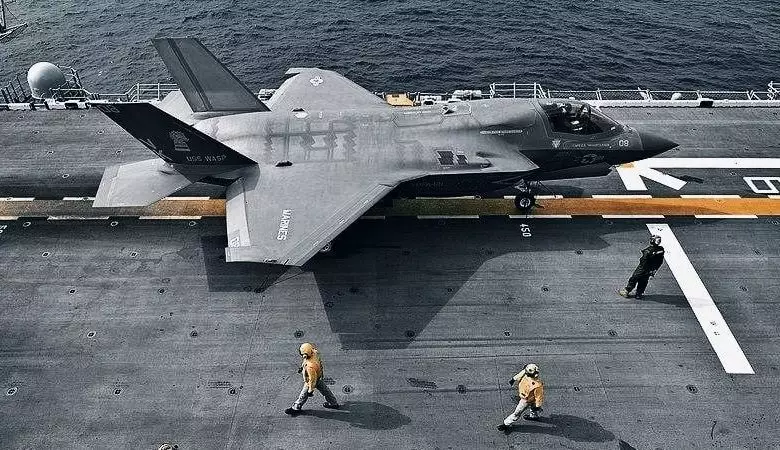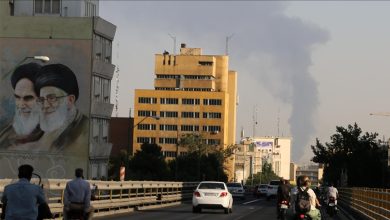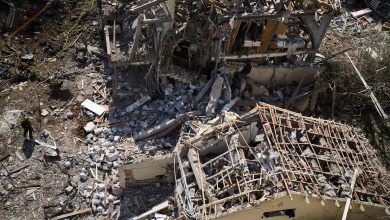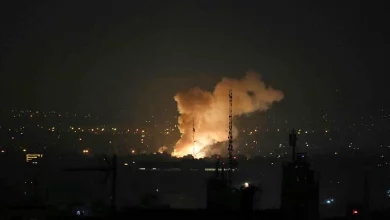Yemeni Defense System Poses Potential Threat to US Operations
The United States launched extensive aerial strikes against Yemen beginning on March 15, 2025, marking the largest American military operation in the West Asian region since the Trump administration's second term.

The United States Navy and Air Force have conducted over 1,000 strikes in various parts of Yemen. As reported by Pars Today, these operations have involved the use of strike fighters launched from the “Harry Truman” and “Carl Vinson” aircraft carriers.
The United States deployed strategic B-2 bombers along with massive 14-ton “BU-57” bunker buster bombs in recent operations. Despite their formidable power, these munitions did not achieve the desired impact on Yemeni underground targets. The Yemeni forces were able to reconstruct the tunnel entrances and exits that had been struck, indicating a significant challenge for the U.S. in attempting to dismantle Yemen’s military capabilities. This outcome underscores the complexity and difficulty of neutralizing the strategic assets of Yemeni forces.
A series of setbacks has marked the U.S. military’s recent efforts, with the downing of several F-18 jets and numerous drones. Reports suggest there is a potential threat to advanced F-35 fighters posed by Yemeni forces. In response to these developments, the White House has unexpectedly shifted its approach, announcing a ceasefire with Yemen.
On May 8, Trump halted military operations in Yemen. According to NBC News, the intervention has cost the United States over $1 billion since March, with thousands of bombs and missiles deployed over the region.
A recent article by the New York Times titled “Why Trump Suddenly Declared Victory Over Houthi Militia” elucidates the unexpected cessation of U.S. military operations in Yemen. The report suggests that Trump initially anticipated achieving his goals within a month. However, after incurring over $1 billion in costs and witnessing the loss of several F-18 Super Hornet strike fighters and the much-publicized MQ-9 UAVs, Trump grew increasingly impatient.
A segment of the report highlights that Yemeni defense systems reportedly came close to targeting the advanced American F-16 and F-35 fighter jets. Consequently, Trump opted to suspend military actions against Yemen to avert additional controversy. With Oman acting as an intermediary, the United States requested Yemen cease its assaults on American vessels, promising in return that US military operations against Yemen would also be suspended.
The pivotal question arises: What defense mechanisms and missiles have the Yemeni forces deployed to counter American military aircrafts, instilling a sense of alarm in Trump? In late August 2019, Yemenis introduced their Fater-1 defense missiles. This missile is reportedly an advanced iteration of the 3M9 missile, part of the Soviet-era SAM-6 surface-to-air defense system, boasting a range of 25 kilometers. The medium-range defense system features probable semi-active radar and infrared guidance capabilities, successfully intercepting the American MQ-9 drone.
Yemeni forces have successfully brought down several Saudi aircraft, including F-15 fighters, Tornado jets, and Apache helicopters, during the ongoing conflict involving the Saudi-led coalition. This achievement is attributed to their innovative adaptation of short-range R-27 air-to-air missiles, which have been equipped with a Russian infrared guidance system.
The recently released images capturing the downing of aircraft suggest that Yemeni forces initially identified the target using thermal cameras. Subsequently, they deployed a missile equipped with an infrared guidance system to strike the aircraft. Based on the flight trajectory and the intensity of the explosion observed in the images, it is indicated that short-range R-27 missiles were utilized in the operation.
The F-35 fighter jet, renowned for its stealth capabilities, offers significant protection and immunity against radar-based air defense systems. Despite its advanced evasive features, it remains vulnerable to short-range defense systems armed with guided infrared missiles, like the R-27, which can visually detect and target the aircraft. This presents a considerable threat to stealth fighters as well as the G-4 models of the F-16.
An American official revealed in an interview with the War Zone website that the F-35 fighter jet had to perform evasive maneuvers to avoid Yemeni ground-to-air missiles. The official stated, “The missiles were so close that the F-35 was compelled to conduct maneuvers.” Other American officials indicated that several F-16 and F-35 fighters narrowly avoided being struck by the Yemeni air defense system, making the threat of American losses quite tangible.
Yemeni advancements in weaponry and munitions have significantly influenced the United States’ decision to reassess and ultimately halt its military operations against Yemen. Initially, the U.S. had underestimated the capabilities of the skilled Yemeni forces and Ansraullah fighters, who have extensive experience battling the Saudi coalition. Despite Western misrepresentations portraying them as unsophisticated and lacking basic military skills, these forces have proven to be formidable opponents, challenging the expectations of American officials and military leaders.
An American military operation targeting Yemen resulted in the downing of 27 MQ-9 “Reaper” drones by Yemeni missile defenses, which led to expenses surpassing $800 million for Washington. Additionally, the potential threat to F-35 fighter jets underscored the significant prowess, expertise, and resourcefulness of Yemeni forces. Their capability to execute impactful and strategic blows has created substantial apprehension among US military officials.







